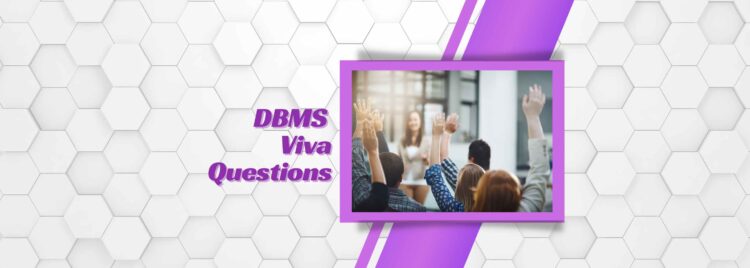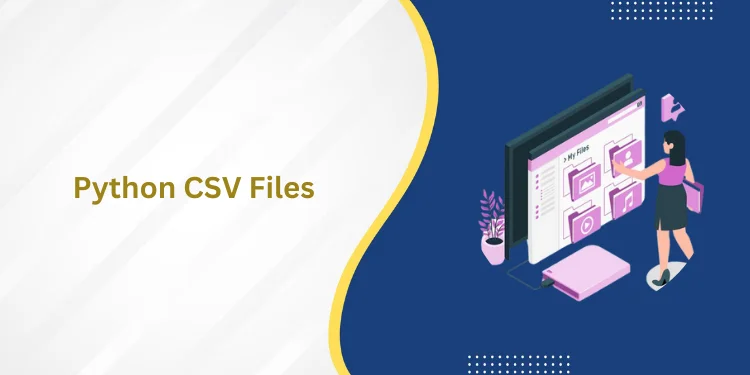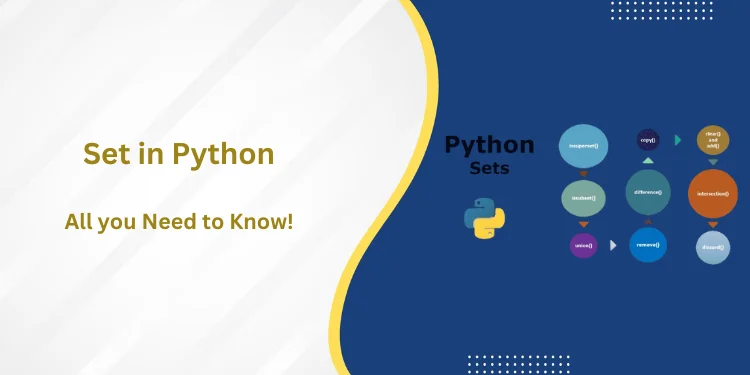Table of Contents
ToggleIntroduction
DBMS Viva Questions, A viva is a university examination in which students speak in response to questions that are typically focused on a specific project and topic. A viva is a university examination in which students speak in response to questions that are typically focused on a specific project and topic.Viva questions are significant components of academic programmes and are frequently administered at the end of a semester. Around 2.5 quintillion atabytes of d are produced daily in the industry today. Therefore, it is crucial that we all analyse this data and produce the necessary results using database management systems.(DBMS).
What is viva?

Before we discuss the DBMS VIVA questions, we must first discuss viva. An oral examination of your thesis known as a “viva voce” provides you the chance to defend it and helps the examiners determine whether or not you have met the requirements for the degree you are enrolling for.
Here we Discuss the DBMS Viva Questions
What is a Database?
A database is a logically structured collection of data that can be updated, accessed, and managed with ease. Anything generated using the create command is a database object, and databases often comprise collections of tables or objects that have records and fields. A single entry in a table is represented by a tuple or a row. The fundamental pieces of data storage, which provide details about a specific aspect of the table, are an attribute or a column. A DBMS retrieves data from a database using user-provided queries. This question must be asked in your DBMS Viva Questions.
What is DBMS?
A software programming called a database management system (DBMS) is made to manage and arrange data in a systematic way. In addition to managing the security and access controls for a database, it enables users to build, change, and query databases.
Mention the different types of DBMS

This question can be one of the DBMS VIVA Questions. The different types of DBMS are as follows:
- Relational DBMS (RDBMS): This kind of DBMS makes use of a structure that enables users to retrieve information in relation to other information in a database. Data is kept in the form of tables in this kind of DBMS.
- Hierarchical DBMS: As implied by its name, this form of DBMS has a structure resembling a tree, with the nodes of the tree standing in for records and the branches for fields.
- Network DBMS: This kind of DBMS enables many-to-many relations, allowing the linking of multiple member records.
- Object-oriented DBMS: uses specialised software known as objects to store data pieces and the commands for the activities to be taken with the data.
What are the different levels of abstraction in the DBMS?
There are three levels of data abstraction in DBMS. They are:
- Physical Level: It is the lowest level of abstraction and describes how the data is stored.
- Logical Level: This is the next level of abstraction after the Physical level. This layer determines what data is stored in the database, and what is the relationship between the data points.
- View Level: The View Level is the highest level of abstraction and it describes only a part of the entire database.
You must include this question in your DBMS Viva Questions.
What is an entity-relationship model?

It is a diagrammatic approach to database architecture in which relationships between real-world things are depicted as entities. This method makes it simple for the DBA team to comprehend the schema. You must prepare this as it will be asked during DBMS Viva Questions.
Click here to know more about: data science training in Noida
What do you Understand by the Terms Entity, Entity Type, and Entity Set in DBMS?
You must include this question in your DBMS Viva Questions.
- Entity: An entity is a physical object with attributes, which are nothing more than the specific object’s properties. An employee is one type of entity. This specific entity may have attributes like empname, empid, etc
- Entity Type: An entity type is nothing more than a group of entities with similar attributes. An entity type often refers to one or more connected tables in a certain database. Therefore, entity type can be understood as a trait that gives an entity its own unique identification. DBMS Viva Questions, An employee might, for instance, contain attributes like empid, empname, department, etc.
- Entity Set: A database’s collection of all entities of a specific entity type is known as an entity set. An entity set could include a group of people, a group of businesses, or a group of workers.
What are the Different Types of keys in the Database?
There are mainly 7 types of Keys, that can be considered in a database. I am going to consider the below tables to explain to you the various keys.
- Candidate Key: This group of characteristics can be used to identify a table specifically. There may be more than one potential key for each table. In addition, one key can be selected as the primary key from among all the candidate keys. Given that CustomerID and PanNumber in the example above may each uniquely identify a tuple, they would be regarded as a candidate key.
- Super Key: This is a group of characteristics that can identify a tuple in a special way. Therefore, a superkey is a candidate key, main key, and unique key, but the opposite is not true.
- Primary Key: These are the attributes that are used to identify each tuple specifically. Since CustomerID and PanNumber are both candidate keys in the example above, either one of them may be selected as the primary key. CustomerID has been used in this case as the main key.
- Unique Key: Similar to the primary key, the unique key also permits NULL values in the column. In this case, the PanNumber can be thought of as a special key.
- Alternate Key: The candidate keys that are not selected as a primary key are known as alternate keys. The substitute key in the aforementioned illustration is PanNumber.
- Foreign Key: The foreign key to the attribute to which it relates is an attribute that can only accept the values already in use as the values of some other attribute. The CustomerID from the Customer_Payment Table is referred to in the example above as the CustomerID from the Customers Table.
- Composite Key: A composite key combines two or more columns to uniquely identify each tuple. Each tuple in the table can be uniquely identified by grouping the CustomerID and Date_of_Payment together in this case.
As it will be questioned during the DBMS Viva Questions, you must be prepared.
Also read: data analytics courses kolkata
What do you Understand by Cursor? Mention the Different Types of Cursor

This question can be one of the DBMS VIVA Questions. A cursor is a database object that facilitates row-by-row data manipulation and represents a result set.
These are the several sorts of cursors:
- Implicit cursor: This kind of cursor is automatically declared as soon as SQL is executed. The user is not informed of the cursor’s declaration in this instance.
- Explicit cursor: This form of cursor, which manages a query in more than one row, is described by the PL/ SQL.
What is SQL and where is it Used?
As it will be questioned during the DBMS Viva Questions, you must be prepared. The fundamental tool for organising and accessing relational databases is SQL, advanced dbms viva questions, often known as Structured Query Language. This language retains relationships between tables and is used to manipulate and retrieve data from a structured data format in the form of tables. So, to put it simply, you can communicate with the database using SQL.
What are joins in SQL and what are the different types of joins?
A JOIN clause is used to combine rows from two or more tables, based on a related column between them. It is used to merge two tables or retrieve data from there. There are 4 joins in SQL namely:
- Inner Join
- Right Join
- Left Join
- Full Join
This question can be one of the DBMS VIVA Questions.
Explain a few advantages of a DBMS.
The professor may quiz you on this during DBMS VIVA Questions. Following are the few advantages of using a DBMS.
- Data Sharing: Multiple users can exchange data from the same database at once. End users can respond promptly to changes in the database environment thanks to such sharing.
- Integrity constraints: The presence of such restrictions enables the organised and precise storage of data.
- Controlling redundancy in a database: provides a means to merge all the data into a single database, eliminating redundancy in the database.
- Data Independence: This enables modifying the data structure without changing the makeup of any of the application programmes that are already running.
- Provides backup and recovery facility: It has the option of being set up to automatically backup data and restore database data as needed.
- Data Security: The tools required to increase the security and dependability of data storage and transfer are provided by DBMS. Some common technologies used to secure data in a DBMS include authentication (the process of granting a user restricted access) and encryption (encrypting sensitive data such as OTP, credit card information, etc.)
Explain Different Languages Present in DBMS.
Following are various languages present in DBMS:
- DDL(Data Definition Language): It contains commands which are required to define the database.
E.g., CREATE, ALTER, DROP, TRUNCATE, RENAME, etc. - DML(Data Manipulation Language): It contains commands which are required to manipulate the data present in the database.
E.g., SELECT, UPDATE, INSERT, DELETE, etc. - DCL(Data Control Language): It contains commands which are required to deal with the user permissions and controls of the database system.
E.g., GRANT and REVOKE. - TCL(Transaction Control Language): It contains commands which are required to deal with the transaction of the database.
E.g., COMMIT, ROLLBACK, and SAVEPOINT
This question can be one of the DBMS VIVA Questions.
What is meant by normalization and denormalization?
- The method of normalisation involves breaking up the data into various tables in order to reduce redundancy. Normalization results in greater disc capacity utilisation and makes it simpler to preserve the database’s integrity.
- Denormalization is the opposite of normalisation because it merges the normalised tables into a single table to speed up data retrieval. By flipping the normalization, the JOIN operation enables us to produce a denormalized representation of the data.
As it will be questioned during the DBMS Viva Questions, you must be prepared.
What are 2-tier and 3-tier architecture in a DBMS.
The 2-tier architecture refers to the client-server architecture in which applications at the client end directly communicate with the database at the server end without any middleware involved.
- Example – Contact Management System created using MS-Access or Railway Reservation System, etc
The 3-tier architecture contains another layer between the client and the server to provide GUI to the users and make the system much more secure and accessible. In this type of architecture, the application present on the client end interacts with an application on the server end which further communicates with the database system.
- Example – Designing registration form which contains a text box, label, button or a large website on the Internet, etc
The professor may quiz you on this during DBMS VIVA Questions.
What is RDBMS?
As it will be questioned during the DBMS Viva Questions, you must be prepared. RDBMS is a short form of Relational Database Management system. It is a software system that stores only data that needs to be stored in related tables. In RDBMS, data is managed and stored in rows and columns, known as tuples and attributes
What is Database Partitioning?
Division of a logical database into complete independent units for improving its management, availability, and performance is called Database partitioning.
What is Database Relationship?
The professor may quiz you on this during DBMS VIVA Questions. The database relationship is associations between single or multiple tables that are developed using join statements. Data can be efficiently retrieved from the Database using this method.
There are primarily three types of relationships in DBMS:
- One-to-One,
- One-to-many,
- Many-to-many.
What is Index Hunting?
This question can be one of the DBMS VIVA Questions. A data structure called index hunting increases the speed of database data retrieval processes. It is the process of boosting the index collection. Techniques like query distribution and query optimisation are used to accomplish it..
What is Data Warehousing?
Data warehousing is a method for gathering and organising data from various sources in order to produce insightful business information. This approach is often used to integrate and analyse data from many sources that pertain to company. You must include this question in your DBMS Viva Questions.
What is Database Architecture?
The DBMS design representation known as database architecture aids in the design, DBMS Viva Questions, development, implementation, and maintenance of the DBMS system. It separates the DBMS into elements that may be individually altered, replaced, modified, and changed.
What is 1NF?
1NF is the First Normal Form. It is the simplest type of Normalization which you can implement in a database.
Every column must have an atomic (single value)
- It helps you to Remove duplicate columns from the same table
- It should have created separate tables for each group of related data and helped you to identify each row with a unique column
The professor may quiz you on this during DBMS VIVA Questions.
What is 2NF in the DBMS?
2NF is the Second Normal Form.
Any table said to have in the 2NF should satisfy the following 2 conditions:
- A table is in the 1NF.
- Each non-prime attribute of a table is functionally dependent on the primary key.
What is BCNF?
BCNF is a sort from the Boyce-Codd Normal Form. It is an advanced version of the 3rd Normal Form, also called 3.5NF.
A table that complies with BCNF and satisfies the following conditions:
- It is in 3NF
- To have functional dependency X->Y, X should be the super key of the entire table.
- It means X can’t be a non-prime attribute if Y is a prime attribute.
As it will be questioned during the DBMS Viva Questions, you must be prepared.
What is Hashing in DBMS?
Hashing is a technique used in DBMS systems to locate requested data on the disc without the usage of an index structure. When indexing and retrieving objects from the Database, a condensed hashed critical value is utilised instead of the original critical value. You must include this question in your DBMS Viva Questions.
What is a Clustered index?
This question can be one of the DBMS VIVA Questions. Cluster indexes arrange the table’s rows of data in accordance with their core values. There is only one clustered index per table in the DBMS system.
The DBMS system can better define the order in which data is stored in a table with the use of a clustered index. As a result, each table can only have a single clustered index.
Conclusion
I’ll be talking about the most popular DBMS-related exam questions in this article on DBMS Viva Questions. These inquiries are broken down into generic, SQL-based, and query-based categories. Every day, around 2.5 quintillion bytes of data are produced. Therefore, it is crucial that we all analyse this data and produce the necessary results using database management systems.(DBMS).
Frequently Asked Questions
What is DBMS short answer?
Essentially, a database management system (or DBMS) is just a computerised data-keeping system. Users of the system are provided with the ability to carry out a variety of actions on such a system for either managing the database structure itself or manipulating the data in the database. As it will be questioned during the DBMS Viva Questions, you must be prepared.
What is primary key in DBMS?
The professor may quiz you on this during DBMS VIVA Questions. The column or columns that each row in a table uses to uniquely identify itself is known as the primary key. For Optim to insert, update, restore, or delete data from a database table, the table must contain a primary key.
Why is DBMS used?
Data can be changed or extracted by users and other programmes thanks to DBMS, which manage the data, the database engine, and the database structure. This contributes to the provision of data security, data integrity, concurrency, and consistent data administration methods.
What is SQL full form?
As it will be questioned during the DBMS Viva Questions, you must be prepared. A relational database’s structured query language (SQL) is a programming language used to store and process data. In a relational database, data is stored in tabular form, with rows and columns denoting various data qualities and the relationships between the values of those attributes.
What is DBMS in MS?
The system software used to create and administer databases is referred to as a database management system (DBMS). End users can create, protect, read, update, and remove data in a database using a DBMS.













